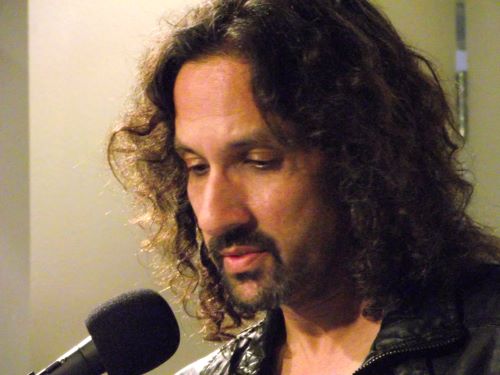The cities of South Texas boast an ever-evolving bicultural ambience, with American and Mexican influence effortlessly blending together for any group event. Planners that bring groups to this area of the state can draw from a wide palette of nature, food, history, music and a wealth of other components to produce a truly diverse program.
Corpus Christi
Hometown of the late Tejano superstar Selena Quintanilla-Perez, Corpus Christi stands apart from other nearby cities. Located right on Corpus Christi Bay, just off the Gulf of Mexico and backdropped by aquatic activities, shopping and dining, the town’s most popular attractions and meeting spaces are all right downtown. Corpus Christi CVB Director of Communications Ashley Simper says the city has gone through a resurgence in the last few years.
“There’s an immense amount of passion and new energy and creativity in our city,” she says. “We’ve got so many areas that have been revitalized. For someone who hasn’t been here in a few years, it’s not the same Corpus Christi. It’s very much new and improved.”
Twenty years after Selena’s death, her legend lives and breathes everywhere. A brand new annual event, Fiesta de la Flor, debuted last April at North Bayfront Park in downtown Corpus Christi, showcasing the music of Selena and other Tejano and Latin flavors. The inaugural festival drew 52,000 people over the course of one weekend. No matter what time of year a planner brings a group to Corpus Christi, there is certain to be a smattering of two cultures permeating everything.
“We also have the fourth-largest Dia de Los Muertos street festival in the country,” Simper says. “The attendance of 2014 really took it up to another level.”
Brownsville
As the southernmost city in Texas, Brownsville boasts cultural elements drawing heavily from Matamoros, Mexico, which sits directly across the Rio Grande River. In Brownsville, influences from both countries fuse into yet another unique blend, especially via the city’s signature festival, the Charro Days Fiesta, the biggest celebration in the Rio Grande Valley. Numerous other bicultural festivals unfold throughout the year, providing a plentiful array of backdrops, no matter what month a planner decides to book an event.
For small to midsize groups, Brownsville offers 32 hotels, plus numerous event spaces like the Amigoland Convention Center, the newest banquet facility in the city. The Brownsville Museum of Fine Art features numerous works from the last two centuries and is common choice for small groups.
Harlingen
Birding culture dominates the Rio Grande Valley, and in the case of Harlingen, one of the few freshwater sources in the local stretch of migration—the Arroyo Colorado—runs right through the city. The World Birding Center rests along its banks and groups can participate in birding adventures that don’t require one to be a bird aficionado of any sort. Other locales include Ramsey Nature Park and Thicket Nature Park.
Harlingen also sits between two national wildlife refuges, the Laguna Atascosa and the Santa Ana, which, combined together, offer the most bird sightings in the nation. Several options for groups exist, especially those who want to stage events outdoors.
South Padre Island
At the southern tip of Texas and occupying the southern end of the world’s longest barrier island is the Sand Castle Capital of the universe, and also a destination renown for turtles and birds. Only 5,000 people actually live on the island, but as a destination, it attracts a few hundred meetings, conventions and trade shows every year. Groups have access to the Gulf of Mexico, Laguna Madre Bay and 34 miles of natural seashore. With 45,000 square feet of space, the South Padre Island Convention Centre regularly accommodates a wealth of events.
PageBreak
Even though beach-going is the obvious choice, delegates don’t have to dedicate themselves to sand. For example, the culture of South Padre Island revolves around places like Sea Turtle Incorporated. Founded in 1977, the facility thrives on teaching children and other conference attendees the importance of preserving sea life. Educational tours are available for groups of all sizes.
Laredo
Laredo is one of the main crossing points into the U.S., even before the nation existed. Today, it’s 96 percent Hispanic and offers loads of cultural experiences for groups. Aileen Ramos, marketing manager at the Laredo CVB, says culinary experiences are all the rage with group travel.
“We have classes called Frontera Fusion,” she says. “Groups can come here and have a cooking class with history in the mix. Like, for example, how to use a molcajete, basically a mortar, but it’s a Mexican one, so it’s made of volcanic rock and there’s a process to cure it, so the class goes through the whole process, and how to prepare spices and salsas.”
It doesn’t stop there. Other programs include group art walks and historical tours with actors taking groups all over town to learn where certain events took place.
“Laredo is older than the U.S.,” Ramos says. “We were founded in 1755 so we have a lot of history, especially in our main square, because it’s right on the river.”
McAllen
Nine different birding centers exist in the Bentsen Rio Grande area, with McAllen functioning as a prime central access point. For groups, introductions to birding are popular, says Trisha Watts, communications director and convention sales manager for the McAllen CVB, primarily because over 500 species of birds have been documented. Enthusiasts from all over the world descend upon the McAllen area, but convention attendees don’t have to be birding aficionados per se. Natural sanctuaries provide tremendous backdrops for corporate events, no matter who attends.
“McAllen is a huge nature attraction because we’re right in the middle of the migratory path for birds and butterflies,” Watts says. “Whether they’re going north or coming back south, we’re their little pit stop.”
What’s more, the convention infrastructure offers quite a bit for no price. Groups are always relieved at not having to worry about incidentals.
“Parking at the convention center is free,” Watts says. “Parking at the hotels is free, and the shuttles from hotels. All those extras they have to worry about when they go to the bigger metropolitan cities in Texas, they don’t have to worry about those things here.”
Longtime Meetings Focus contributor GARY SINGH has a thing for border towns.







